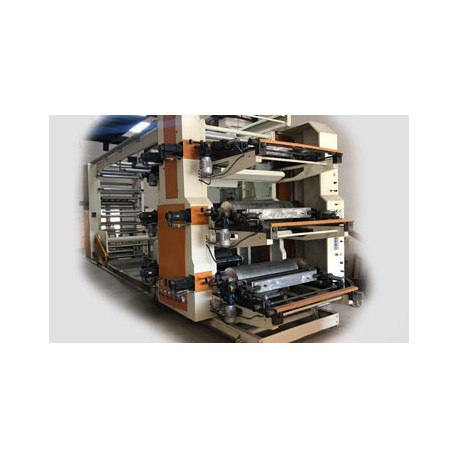- English
- Türkçe
High Quality 6 color stack type printing machine
Data sheet
| Machine Speed | 300m /min (varies according to the type of material) |
| Unwinder Bobbin Diameter | 1200 mm |
| Winder Bobbin Diameter | 800 mm |
| Maximum Working Width | 1200mm |
| Idler roller width | 1250 mm |
| Tension Control | AVAILABLE |
| Web Guide | AVAILABLE |
| Heater System | With Resistance, Fan & Dryer |
| Unwinder | On drum for paper and derivative / Plastic, metallized, O.P.P., C.P.P. air winding for derivative products |
| Print Repeat | Up to 260 mm- 800 mm- 1000 mm - 1400 mm |
| Stripper Type | DR BLADE |
| Unit Pcs | 2-4-6-8 |
| Paint Pump Pcs | 2-4-6-8 |
| Properties | Steel |
| Body thickness | 50 mm ST37 |
More info
FLEXO TECHNOLOGY
It is the most widely used printing in packaging printing. Flexo printing applied on uneven surfaces; It is applied in many products such as cardboard, kraft, corrugated cardboard, plastic films and aluminum foil. In the 1990s, there were great developments in flexo printing technology. These developments can be summarized as the use of thinner photopolymer plates, the development of anilox roller, improved flexo printing inks with higher concentration, compatibility with higher level printing elements and accurate determination of the working cycle speed, the development of electronic and mechanical technologies, and the adoption of standardized film reproduction processes. .
Flexo printing machines consist of two types: central drum and stack (independent single unit).
There is no significant difference between drum flexo and stack flexo. It is seen that drum flexo is easier in terms of seating pressure crosses between them. It does not require a lot of registers because the flexsible material is wrapped on the drum and the material is fixed.
Ceramic anilox can be used in both machine types. In flexos using ceramic anilox, it is possible to save large amounts of ink and solvent by using a closed scraper blade (doctor blade).
It is used extensively in flexos that we call stack type according to market affairs.
Even if ceramic roller and plate technology is advanced in flexo printing technology, a wide range of information is required.
Therefore, special experience knowledge such as cliché thickness, anilox roller screen, ink quality, adjusting the solvent entering the ink with the machine drying system according to the weather conditions is very needed. Therefore, proofing is needed to see the vibration values of the machine for very special works, the precision of the force settings and the gradient transition values in flexo.
All these should be designed by people who know this technology very well. Making the machine alone is not enough for these works.



